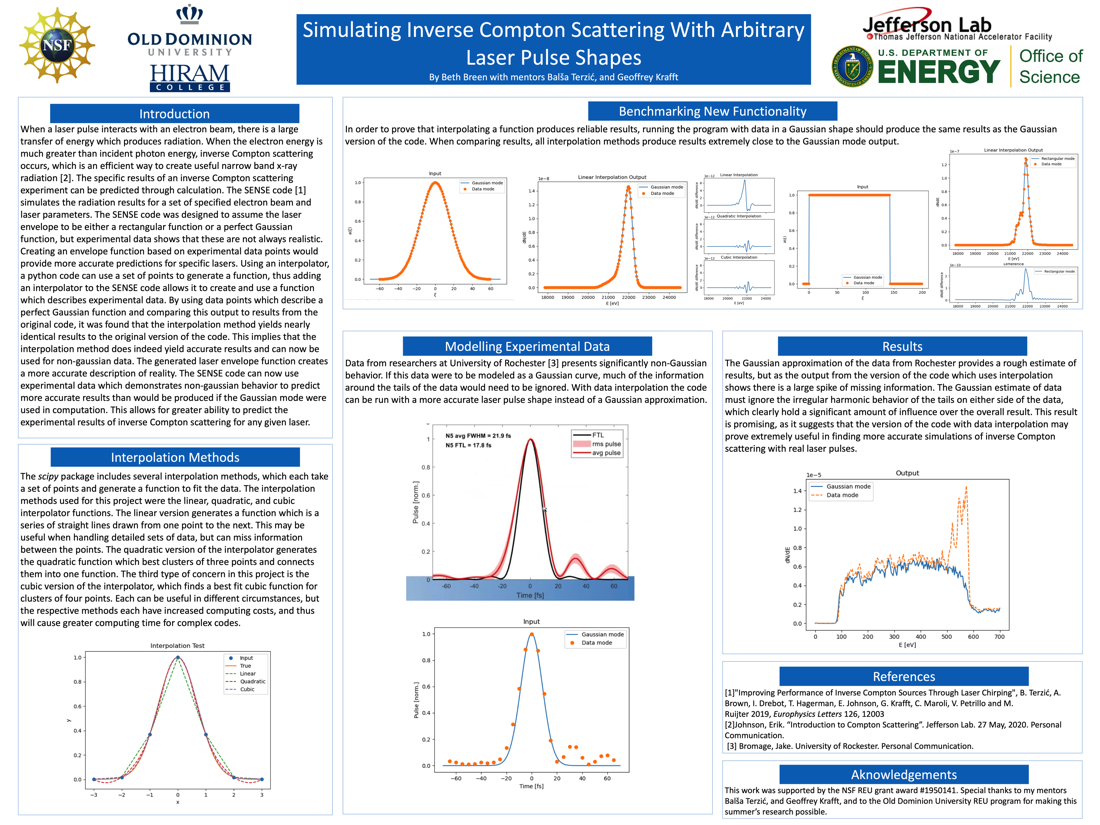Undergraduate Research at Jefferson Lab
Simulating Inverse Compton Scattering with Arbitrary Laser Pulse Shapes
Student: Elizabeth Breen
School: Hiram College
Mentored By: Balša Terzić
When a laser pulse interacts with an electron beam, there is a large transfer of energy which produces radiation. When the electron energy is much greater than incident photon energy, inverse Compton scattering occurs, which is an efficient way to create useful narrow band x-ray radiation. The specific results of an inverse Compton scattering experiment can be predicted through calculation. The SENSE (simulation of emitted non-linear scattering events), code simulates the radiation results for a set of specified electron beam and laser parameters. The SENSE code was designed to assume the laser envelope to be either a rectangular function or a perfect Gaussian function, but experimental data shows that these are not always realistic. Creating an envelope function from experimental data points would provide more accurate predictions for specific lasers. Using an interpolator, a python code can generate a function from a set of points, thus adding an interpolator to the SENSE code allows it to create and use a function which describes experimental data. By using data points which describe analytical functions already available in SENSE -- perfect Gaussian and a rectangular pulse function -- and comparing this output to results from the original code, it was found that the interpolation method yields nearly identical results to the original version of the code. This implies that the interpolation method indeed yields accurate results and can now be used for arbitrary laser pulse shapes, such as those in most experiments. The generated laser envelope function creates a more accurate description of reality. The SENSE code can now use experimental data which demonstrates non-Gaussian behavior to predict more accurate results than would be produced if a Gaussian approximation were used in computation. This allows for greater ability to predict the experimental results of inverse Compton scattering for any given laser.
[Watch the presentation on YouTube]

Citation and linking information
For questions about this page, please contact Education Web Administrator.
